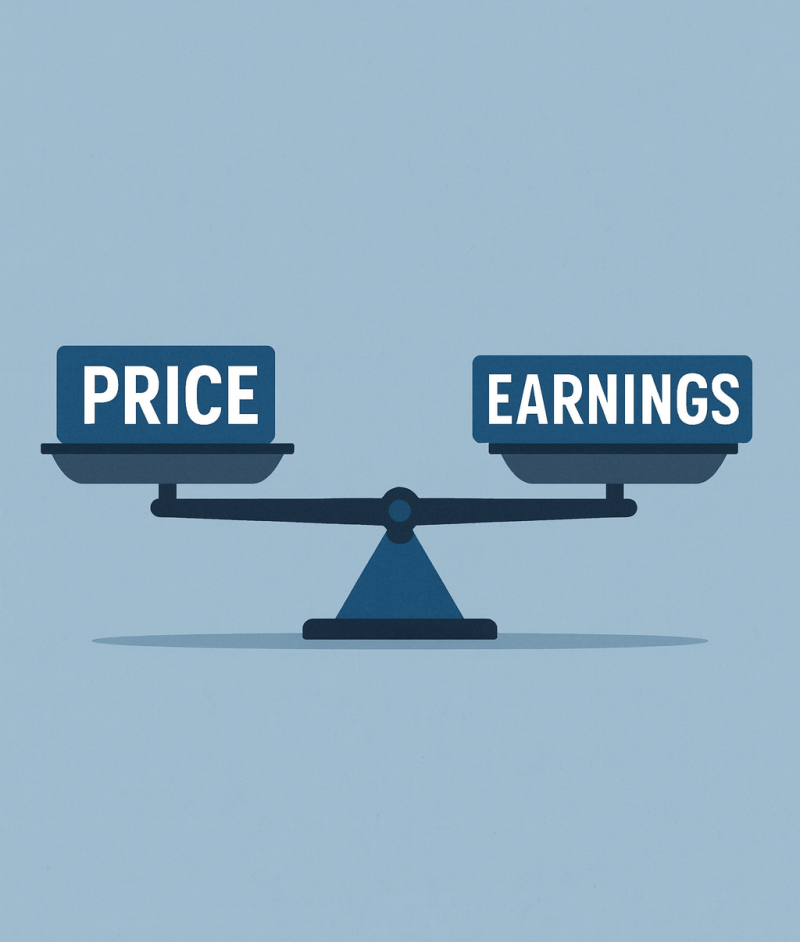Dividend Yield Vs Total Return: What Matters More for Long-Term Investors?

These two key concepts in equity investing occur frequently – especially when investing exclusively in companies which pay dividends, as our equity income funds do. They are closely related but have specific meanings in an equity investment context which are worth laying out.
Dividend yield is a measure of the dividend income a shareholder receives relative to the value of the share, usually over a year, and is typically expressed as a percentage. Total return is the overall gain over a period relative to the starting value, and for shareholders encompasses the increase in the share price, any dividends received, and the effect of reinvesting any dividends into shares.
In this Insight, we’ll explore dividend yield and total return, why they matter, and how we think about them when managing funds.
Dividend Yield
Before discussing dividend yield in more detail, it is important to understand what dividends are.
What are dividends?
Dividends are payments made by a company to its shareholders, usually in cash. In essence, dividends are how shareholders get their portion of a company’s profits. The amount and frequency of dividends are determined by the company’s board of directors and must be approved by shareholders.
Not every company pays a dividend. In general, young or fast-growing companies will use any spare cash to invest in further growth, while unprofitable or cyclical companies might not have the cash to spare. Companies in more mature industries, however, might find themselves profitable and steadily generating cash, but have fewer opportunities to use their cash where it can be sure of generating attractive returns. Rather than spend it on less fruitful projects, or simply let it accumulate, such companies might pay cash out in a dividend to their shareholders. After all, the company belongs to the shareholders, and after the dividend is announced, they can use the cash as they see fit – including by buying more shares.
Dividends have many possible benefits for an investor's portfolio, including:
- Aiding returns in low-growth periods: Dividend-paying stocks can add stability to an investment portfolio, potentially reducing volatility and offering a cushion during market downturns.
- Providing an inflation hedge: Over the long term, dividend payments can grow in line with inflation or often at a greater rate.
- Compounding potential: Reinvesting dividends can lead to compounded growth over time, enhancing total returns.
- A source of cash: Dividends can be useful as a source of cash in a portfolio that doesn’t require the selling of assets or additional contributions.
We investigate the importance of dividends to the long-term equity investor in our article Why Dividends Matter to investors.
What is dividend yield?
In general, yield is a measure of the realised gains or income produced by an asset. In equity investing context, therefore, dividend yield is the amount of dividends paid as a proportion of the share price.
Dividend yield is usually expressed as a percentage and calculated over a year. For example, if the share price is £100, and £5 per share has been distributed in dividends since a year ago, the dividend yield is 5%.
This is called the historic or twelve-month trailing yield because it counts dividends over the past year. It’s a common way to calculate dividend yield, but other methods can be used when attempting to make fair comparisons between companies – such as by accounting for the different frequencies with which companies pay dividends.
Why are Dividend Yields important to Investors?
By indicating the amount of dividends a share generates relative to the share price, the dividend yield tells an investor how much income an investment has produced in proportion to its value. Although shareholders of listed companies can sell their shares relatively easily, it is still useful to know how much cash has been generated without having to sell any shares. The dividend yield is also an important component of the total return, which we discuss below.
As well as measuring the income a share generates relative to the share price, the dividend yield can tell investors various things about the nature of the company itself.
What is a good Dividend Yield?
“The risk of paying too high a price for good quality stocks – while a real one – is not the chief hazard... Observation over many years has taught us that the chief losses to investors come from the purchase of low quality securities at times of favourable business conditions.”
These famous words of renowned investor Benjamin Graham are especially relevant to dividend investors. A high dividend yield is not, in itself, a bad thing. But using dividend yield as a valuation metric and selecting companies whose high yields make them appear undervalued can lead investors into a form of the ‘value trap’ that Graham described.
At a time when developed market dividend yields are average around 2%, a dividend yield of 10% might bring an investor to consider why other investors haven’t already purchased shares to avail of the generous income on offer, thereby bidding the price up – and the yield down. The answer could lie in the dividend itself and perhaps its sustainability, or in the share price, which may have fallen. A high yield could therefore speak of a rich income opportunity – or of a company in distress.
We invest in dividend-paying companies, but we don’t select companies on the basis of a high yield.
In fact, we deliberately ignore yield in selecting our pool of companies that we can invest in and focus instead on identifying quality, well-run, profitable companies. We regard the dividend as an outcome of a competitive advantage capably harnessed – rather than using the dividend yield as an input to the investment process.
Total Return
In the simplest terms, total return measures the overall performance of an investment. The total return of a share incorporates the change in the share price and any dividends. Like dividend yield, it is typically expressed as a percentage of the investment’s value at the start of the period considered. This period could be a year, the holding period of the investment, or any other useful timescale, and to make useful comparisons between companies and over different timescales, an annualised total return is often used.
In the context of an individual company and its relations with its shareholders, total return is referred to as total shareholder return (TSR). TSR can be used as a metric to assess the performance of company management – although it is not the metric we prefer to see. For more on this topic, see Our Approach to Remuneration.
Importantly, a stock’s total return incorporates not just the price change and the dividends paid, but also the effect of reinvesting any dividends. Taxation of dividends and the practicalities of prompt reinvestment complicate the picture in the short term, but in the long term, the compounding effect of reinvested dividends can have a powerful effect on total returns.
Total return can be calculated as follows:
Total return = Change in price + dividends + change in price of reinvested dividends
For example – with a few simplifying assumptions – if a company’s share price is £100 when it pays a dividend of £6, and the share price increases by 10% over the following month, then the total return over the month would be 16.6%, or:
£16.60 = £10 + £6 + £0.60
Why is Total Return important to Investors?
Total return is the overall gain an investor makes from an investment. It is therefore essential for investment analysis. It lets you understand how much value has been generated from an investment and gives you a much broader picture than its individual components, dividend yield and price growth, could provide. A stock could offer a high dividend yield, but if its price falls heavily, it could still produce a negative total return, indicating that the stock has generated a loss to the investor overall. Total return captures the full picture.
As well as shares, total return can be calculated for other assets and for benchmarks, allowing for useful comparisons between potential investments. A limitation of total return is that it is backward-looking – and past performance does not predict future returns.
What is a good Total Return?
When it comes to total return, the higher the better; there are no inherent downsides to higher total return. But as investment involves risk, so the search for higher returns generally involves taking on more risk.
Over the long term, major developed market stock indices have gone up around 7-10% a year, varying by timescale and region, but some years (such as 2008) have been strongly negative – even for those strategies investing in dividend-paying companies for the ‘cushion’ to total returns that dividends can provide in such periods.
In practice, a common way to consider a stock’s total return is by comparing it to that of an industry benchmark or similar companies, to determine how well it is performing relative to its peers.
Do you need a good Dividend Yield to make a good Total Return?
You don’t need to invest in dividend-paying companies to make a good total return. In fact, many of the fastest-growing companies don’t pay dividends because they have good uses for all the cash they produce. For this reason, funds that invest in growth companies might receive very little cash in dividends, and since dividend income is not likely to be a goal of their investors, they don’t distribute what little they receive to investors. This means they only have ‘accumulation’ share classes, where any dividend income received by the fund is reinvested. To find out more about how funds deal with dividend income, see our insight Accumulation Vs Distribution: Which share class is right for you?.
Over periods of decades, however, the compounding effect of dividends, and the fact that paying dividends can be associated with sensible capital allocation by company management, has meant that dividend-paying companies have outperformed those that don’t pay dividends. And while a strategy of investing only in dividend-paying companies might exclude some of those fast-growing companies from contention, the ‘cushion’ effect and the persistent returns on capital associated with dividend-paying companies can be a route to good performance in risk-adjusted terms.
Whether an investor prioritises both capital growth and income or total return alone comes down to their particular needs and time horizon. Each type of strategy has a role in long-term investing, which is why Guinness Global Investors manages funds with both growth and income styles.
Which funds are best for Yield and Total Return?
Our growth funds invest for long-term capital growth and retain all income to be reinvested. Our equity income funds, meanwhile, invest for both capital growth and income. But equity income investing, under our approach, doesn’t simply involve a search for the companies with the highest yields. As we’ve seen, the subtleties of the relationship between yield and total return, of which yield is a component, mean that the starting point is to look for well-run companies.
For more on equity income investing, why not read Why Dividends Matter to Investors?
Alternatively, discover more about our approach to equity income investing in Asia, Emerging Markets and Europe.
The value of this investment can fall as well as rise as a result of market and currency fluctuations. You may not get back the amount you invested.
This is a marketing communication. Please refer to the prospectus, supplement and KID/KIID for the Funds, which contain full information on the risks and detailed information on their characteristics and objectives, before making any final investment decisions.
Disclaimer
This Insight may provide information about Fund portfolios, including recent activity and performance and may contain facts relating to equity markets and our own interpretation. Any investment decision should take account of the subjectivity of the comments contained in the report. This Insight is provided for information only and all the information contained in it is believed to be reliable but may be inaccurate or incomplete; any opinions stated are honestly held at the time of writing but are not guaranteed. The contents of this Insight should not therefore be relied upon. It should not be taken as a recommendation to make an investment in the Funds or to buy or sell individual securities, nor does it constitute an offer for sale.


